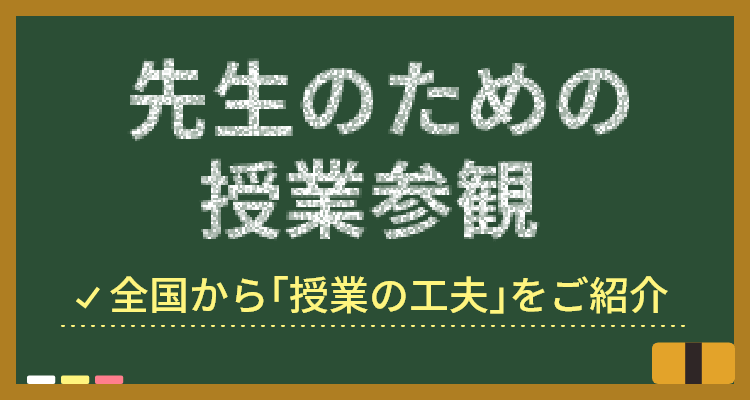【第19弾】ALTという同僚
千葉県立千葉南高等学校
教諭 渡邉 裕子 先生
2020年は特別な年だった。大学入試での英語民間試験導入延期と同時にその気運が一気に消滅し、それ以前の状態に戻ってしまったように思え、焦りや不安を感じた。自らを奮起するために参加していた研修会の多くが中止され、新しく情報を更新する機会が奪われたり、同じ志をもつ先生方と意見を交わす機会がなくなってしまったことも、行き詰った気持ちに拍車をかけたと思う。しかしALTの一言で私は大きな問題を手付かずのままにしていたことに気づき一気に目が覚めた。今は、この問題を解決することは次への大きな一歩につながると感じている。
本校は今年度よりALT拠点校(常駐校)となり、10月からシカゴ出身の女性のALTを迎えた。年末のある日彼女から「生徒のコミュニケーション能力はもっと伸びるはず。でも意見を言う場がない。私はco-workerと思われていない。」と言われ少し驚いて具体的に話しを聞かせてもらうと、それはJTEの授業スタイルやALTに対する扱いといった問題を指していることがわかった。
1.ALTという同僚
「今日は文法を教えるから居室で休んでいていいよ」とALTに言ったことはないだろうか。その時間は休憩していてくれればいいし、「OK」と言ってくれているのだから特に問題はないだろうと思っていたが、それを言われたALTは「私の授業でもあるのにどうしてそんなことを言うんだろう」と心の中で残念な気持ちになっていたのだという。JTEは考査前で終わっていない文法の説明をしたい気持ちがあり、その日はTTだったが急きょsoloのレッスンにしようと思っている。Soloで行うことにもメリットはあるだろうが、TTではなくsoloで行う主な理由は日本語がメインになるからかもしれない。でも、生徒にとっては英語でコミュニケーションを取り合う機会が減る可能性があるし、ALTは生徒に会う機会を奪われてしまう。ALTは、たとえ文法を扱う授業でJTEは日本語を含ませた説明をしたいのであっても、自分にサポートできることはあるはずだから相談してほしいと望んでいる。例えばある文法を生徒に使えるようになってもらいたい時に、ALTとJTEがその場に応じた即興のスキットを見せることでより生徒の理解を深めることができたり、personalized questionを出してもらうことによって出来上がった文をクラスメイトと伝え合う意味合いが増すことも考えられる。
我々JTEはTTを特別な授業だと思い過ぎていないだろうか。TTとsoloの授業の区分けをせずに、ALTとJTEが同じ科目を担当する同志としてもっと連携し合うためには、ALTが科会や科目の打ち合わせに参加をし、JTEと同様に発言する機会をもつことや最終決定に影響を与えるような意見を述べることもできるようにするべきではないだろうか。それにより、まずTTの前に各JTEがALTと行っていた打ち合わせはほんの確認程度で済むようになる。また、生徒の意欲やcreativityを測ることができるエッセイやスピーキングテストの評価については、そこに至るまでに日頃から議論をし共通の指導理念の基に丁寧に指導のステップを重ねていれば、評価方法や基準の作成がスムーズに行えるはずである。そのような信頼関係の下で生徒の英語の運用能力の伸長を見守ったり成長が見られた際に喜びを分かち合えることはTTの醍醐味であり、JTEとALTの良好な関係は生徒の英語学習に対する関心・意欲・態度に大きな影響を与えると考える。
2.協力し合うメリット
これまで私はJTEが考案した授業計画とワークシートを基にTTを行ってきた。TTを行う数日前にALTと打ち合わせをし、今回はこのPartのこの部分を扱うからこんな風に進めましょう、とお願いする。時には、今回はこんなことをやりたいのだけどいいアイデアはないかなと意見を求める。今考えるとALTを都合よく扱っていたものだと思う。その反省を踏まえ、ここでは私とALTが目標の設定の段階から協議しながら行った授業づくりと、それによって得られた利点について触れたい。
Step 0)
I listened to what ALT has been thinking on how TT should be and suggesting about the way TT is now.
Step 1)
ALT and I made the entire lesson goals on Communication English 1 together.
Step 2)
ALT and I made the worksheets for the lessons together, putting a final task.
まずはTTの意義やこれからのTTの在り方について確認をした。最大の意義は、ALTを通して扱う題材やtopicについてglobalな視点で様々な考え方を学ぶことができることであると考えた。それをするためには、授業の中で生徒の頭を揺さぶるquestionを投げかけ、ALTから浴びせられる様々な意見によって生徒の考え方に変化を起こし、意見を出し合える状況を用意しなければならない。各パートで得た知識や自分の考えをまとめて出し切る場がfinal taskであり、それがそのlessonのgoalとなる。
次にALTと授業づくりをしていく中で、私自身が学び、納得して今後変えていこうと考えたことを3点紹介したい。
(1) how to deal with vocabulary
|
a way so far |
a new way |
|
Teachers pick up words, and students look them up. “These are the words I decided you don’t know” |
Students choose three words they want to look up, and describe them the way they like: ex) drawing, trying to find similar words from the vocabularies they know or translating into Japanese |
(2) to have a clear goal or purpose on each activity
Ex) What is a goal for “vocabulary section”?
→ to make students notice what words they don’t know in the passage and learn them positively.
ALTと授業づくりを進めていく中で何度となくされた質問が“What is a goal for this activity?”である。そして恥ずかしながらその度に答えるのに苦慮した。Vocabularyを扱う際の目標は何か。先生が選んだ語句について生徒が意味や定義や例文を作成して表を埋めるという作業は、生徒全員がほぼ同じ情報を共有することになり、先生にとってはその後の授業を進めやすいかもしれないが、主体的学習スタイルとは言い難いだろう。Vocabulary sectionの意義は「自分が」調べたい語句について自分のやり方で学ぶことだとALTは言う。
そこで授業では、ペアになり互いに選んだ語句をその語句を使わずに簡単な表現や授業で習ったことのある語句を使って説明し、相手に想像させる活動を取り入れることにした。それにより生徒は自分の知っている語句を使ったり、それでも伝わらない時には絵を見せて紹介し合いながら、クラスメイトとのやり取りを通して語句の理解を深めることができる。JTEとALTがすることは、生徒の多くが選んでいた語句について、「(簡単な語句で)そんな言い方もできたのか!」と思わせるような表現を紹介することである。相手の理解度に応じて表現や語句を変えていくことは実際のコミュニケーションの場においても欠かせないスキルであり、vocabulary sectionをこのような活動に変えることで、ともするとnew wordsのinputだけで終わっていた活動がinformation gapのあるコミュニケーション活動に生まれ変わることになるだろう。(3語に限定している理由は、意味を推測しながら読む力をつけてほしいためである。)
(3) to give a personalized question in the end of each part that is indirectly related to the final task and give them some opportunities to think of the final task.
Final taskはそれぞれのパートで生徒が学んだconceptを積み上げていくことで完成するように設定し、各パート末のpersonalized questionとfinal taskは間接的に結びついているべきだとALTは言う。実際にそのように授業を組んでみたところ、生徒はそれまでよりもスムーズにfinal taskに取り組むことができたようだ。Final taskに取り組む以前に各パートで自分事として捉えた概念や考えを生かしながら書くことができるからだろう。これまで各パートのpersonalized questionやfinal taskを考えることは私にとって最も難しく時間のかかる作業であったが、今回ALTと一緒に意見を出し合えたことで、有意義な時間となっただけでなく、より納得のいく結果を得ることができたと感じている。またALTとJTEが意見を出し合いながら共に悩むことは、お互いをよりよく知る機会にもなると期待している。
3.ALTと共に行う授業改善

今回ALTの心の声を聞かせてもらう中で一番ショックだったのは、現状を変えたくてもJTEのマインドセットを変えることは難しいから、言われたようにやるしかないと多くのALT達が思っていると知ったことである。確かに私自身のことを振り返っても、ALTというタイトルのせいか、メインの指導者は自分(JTE)で、授業はALTに指示を出しながら組み立てるものと考えていたし、このような機会がなければ外国語指導助手として熱意をもって不慣れな土地に赴任した若者の立場を自分に置き換えて真剣に考えたりしなかっただろう。ただもしここで立ち止まり、同僚としてのALTの存在やTTのあるべき姿を見直すことができれば、ALTのもっている(過去のALTやALT仲間と共有している)豊富な知識やアイデアを生かしながらALTを最大限に活用し、共に授業改善に臨むことができるだろう。ALTは生徒の英語による運用能力の向上という目標を叶えるために必要なアシスタントなのではなく、欠かせない英語科の一員である、と自分自身の認識を改めたいと強く思う。



